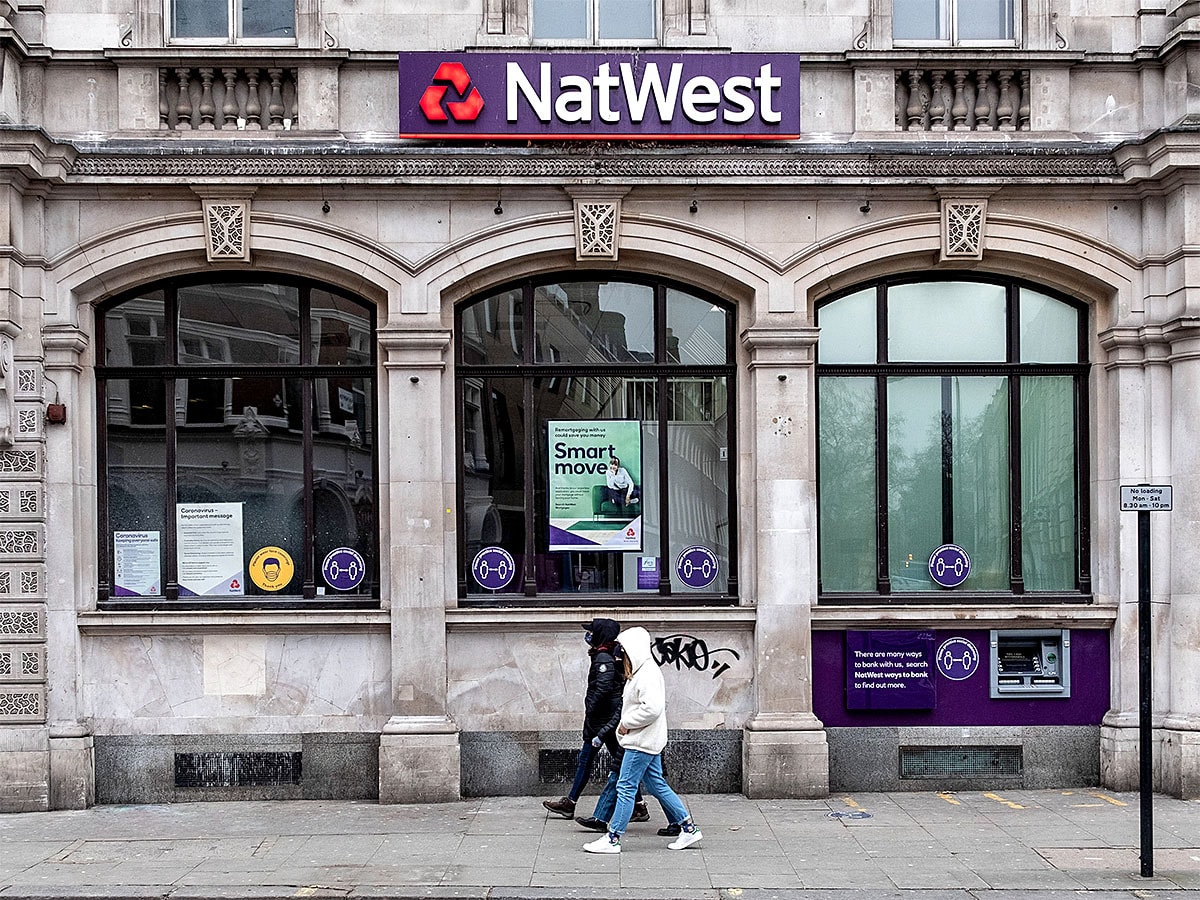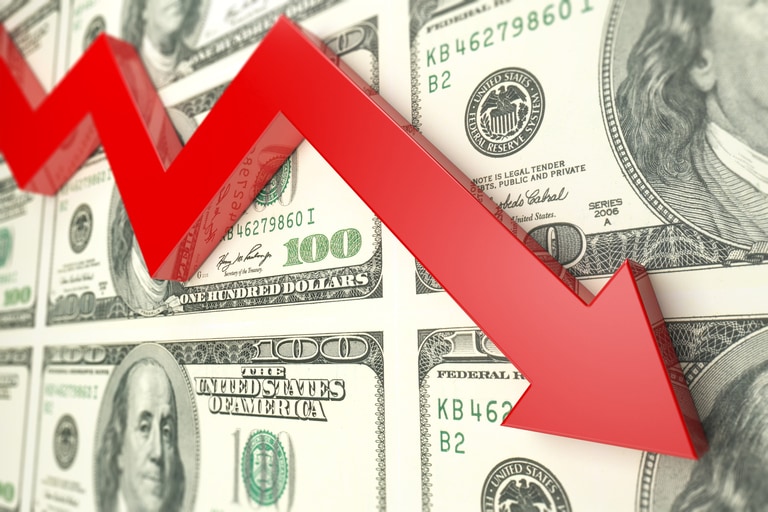It’s been another difficult week for European equity markets with most of the weakness being driven by disappointment over earnings as well as guidance downgrades, amidst concern over the outlook for demand as we head into the final quarter of this year.
Europe
The DAX has struggled to rally after sinking to 7-month lows on Monday of this week, while the FTSE100 has slipped to 2-month lows this afternoon as companies that warn on profits get punished hard, along with their peers.
This is no better illustrated by this week’s biggest losers on the UK benchmark with NatWest, Barclays, Standard Chartered all lower by more than 10% along with consumer goods giant Reckitt Benckiser.
Today’s weakness in the UK banking sector hasn’t been helped by the reaction to NatWest Group’s Q3 numbers which were released earlier today.
NatWest shares plunged to a 30-month low after it downgraded its full year outlook for net interest margin from 3.15% to just above 3%. This is an area that has seen significant erosion this year already, compared to 3.27% in Q1 we have plunged to 2.94% in Q3, while the bank has also found itself under investigation by the FCA over its handling of the Nigel Farage debanking episode which has raised questions over its governance, systems and controls.
Lloyds and Barclays have also come under pressure on the sheer weight of today’s decline in NatWest’s share price, even though there is little comparison between them, especially since this week’s Lloyds results gave the impression of a much better run bank.
Drinks giant Diageo is also lower after sector peer Remy Cointreau slashed its guidance for organic revenue to -15% to -20%, due to weakness in its US markets.
We’re also seeing negative read across on AstraZeneca and GSK after French pharma giant Sanofi warned on 2024 profits, as well as missing on Q3 earnings.
IAG shares initially came under pressure after reporting Q3 revenues of €8.65bn, an increase of 18% and profits after tax of €1.23bn. While passenger revenue rose by 21% to €7.73bn, revenues from cargo fell 29% to €263m.
The seat load factor rose to 88.9% with IAG saying they expect full year capacity to be around 96% of pre-Covid levels, with Q4 bookings currently in line with expectations, with 75% of passenger revenue already booked. IAG did warn however that the impact of events in the Middle East was having a modest impact on revenues in that region, although the shares have managed to recover somewhat from the lows of the day.
US
US markets have tried to rally on the open at the end of what is set to be a negative week, with Amazon’s Q3 numbers offering a welcome lift to the tech sector, even as its cloud business revenue fell slightly short of forecasts at $23.06bn.
Chip makerIntelis also adding to the positive mood in the sector after reporting Q3 revenue of $14.2bn, helped by a boost to client computing revenue which came in at $7.87bn. Profits rose to 41c from 37c a share, helped by a jump in operating margins to 13.6%. For Q4 Intel said it expects to see revenues between $14.6bn and $15.6bn which it says is being helped by a recovery in PC demand.
Tesla shares are higher after it was reported that it is raising the price of its Model Y in China by $2,000.
The big US oil majors are also in focus today with both Exxon Mobil and Chevron reporting their latest Q3 numbers, both of which fell short of expectations.
Chevron saw profits come in at $3.05c a share, well below consensus estimates largely due to a 19% fall in revenues, to $51.9bn, as well as lower margins. Upstream earnings fell 38% to $5.76bn, while downstream earnings fell 33% to $1.68bn.
Exxon Mobil also saw profits miss forecasts, coming in at $2.27c a share, although revenues did beat with $90.76bn, and the dividend was raised to 95c a share. Exxon’s weak point was its chemicals division, which underperformed and is expected to continue to do so in Q4..
Ford is also tumbling after the auto maker pulled its full year guidance on the back of the impact the recent strikes have caused.
FX
Today’s better than expected US economic numbers have had little marked effect on the US dollar which is slightly lower at the end of what has been a broadly positive week, ahead of next week’s Fed rate decision.
While most of this week’s gains have been as a result of some haven demand there is also an element of US exceptionalism given the strength seen in this week’s US economic numbers.
With the reports of a possible ceasefire agreement gaining traction, we are seeing some US dollar softness with the greenback sinking back below 150.00 against the Japanese yen, after pushing as high as 150.78 yesterday, although we could also be seeing some position adjustment ahead of next week’s Bank of Japan rate meeting.
The pound has struggled this week ahead of next week’s Bank of England decision with the deteriorating economic outlook likely to see policymakers vote to keep rates on hold by a bigger majority than was the case in September. It has been suggested that the weakness in the economy could prompt the likes of Swati Dhingra to lean in the direction of a rate cut, which could undermine the pound even more, as well as making it even more difficult to get inflation under control. As a signalling mechanism this would be a huge mistake but its not as if we haven’t been here before as far as the BoE is concerned.
Oil prices have continued their yo-yo performance this week, relying on reports that the US hit back at targets in Syria which had been targeting some of its military assets in Iraq and other parts of the Middle East. Prices slipped back from their intraday peaks on reports from Al Jazeera that negotiations were moving rapidly on a ceasefire agreement and prisoner exchange between Hamas and Israel brokered by Qatar.
This talk of a ceasefire also prompted a pullback in gold prices from the highs of the day.
Volatility
Standard Chartered stock took a beating on Thursday in the wake of earnings news. This highlighted the difficulties the bank is facing in China and also from falling margins on lending activity. The underlying fell by as much as 12% at one point before clawing back a little of those losses before the close. One day vol stood at 219.14% against 55.5% for the month.
Earnings news from Facebook owner Meta on Wednesday night may have impressed at a headline level but investors were taking a glass half empty view of these numbers in the same way they had with Alphabet’s earnings earlier in the week. That ended up dragging on CMC’s proprietary basket of Social Media stocks which traded in a range of around 5% during the session. One day vol came in at 67.97% against 42.22% for the month.
Those tech stock woes hit the NASDAQ index on Thursday, leading the benchmark some 1.7% lower on the day, extending its run into correction territory following the summer highs a little below the 16,000 level. One day vol on the index printed 27.21% against 20.05% for the month.
And US Nat Gas has moved back to two-week highs, lifted by upbeat US economic data and a smaller than expected build in US reserves of the commodity. With no sign of de-escalation in the Middle East either, this is set to keep lending support to prices too. One day vol stood at 48.95% against 47.04% for the month.






